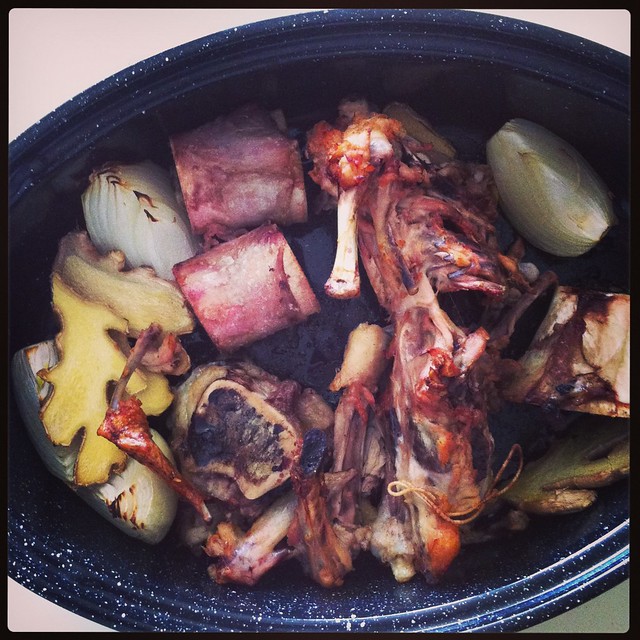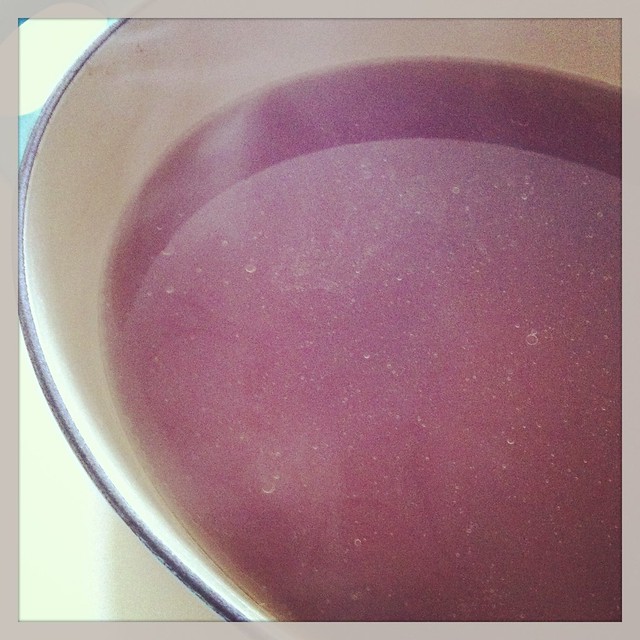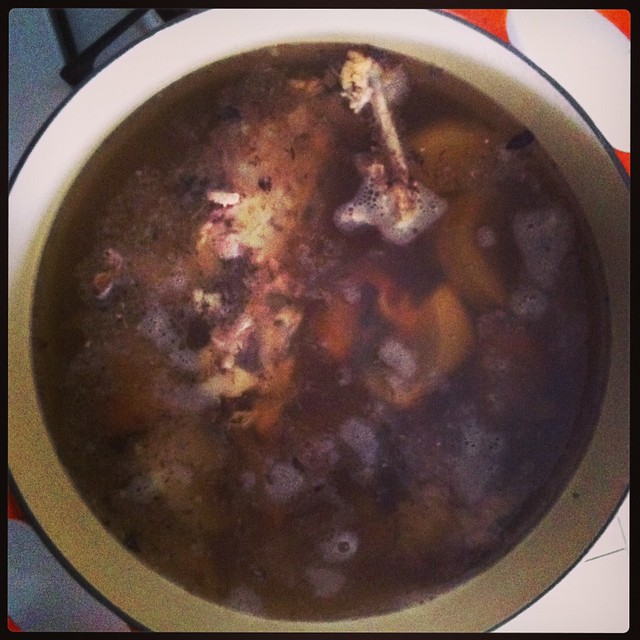-Roasted and ready to go.-
They had warned us about the altitude sickness, but I had assured myself that my strapping twenty-eight year old physique and mental acuteness could overcome something as trivial as natural response. Turns out, not so much.
My head was throbbing like I had just survived a Skrillex concert having been duct tapped directly to a two story subwoofer. Rising to over 11,000 feet (about 3500 meters) Lhasa is one of the highest cities in the world. If you're not from there, then you'll quickly notice the drop in partial pressure of oxygen. There isn't really less oxygen, but since there's less pressure in the atmosphere, it's not as tightly bound in the air. Imagine that instead of drinking water from a cup you poured it on the floor and like the animal you are you're licking it up. There's the same amount of water, it's just not as neatly compact as at sea level. This means you're drawing in significantly less air in Lhasa.
The result is a feeling of being hungover after a night when the next morning you look at the bottles strewn about the living room and wonder how you're still alive. Heahache, dizziness, aching muscles, and a gut punch of nausea are all common symptoms. I was feeling all of it, as were the rest of the people in my tour group and when we checked into our hotel at two in the afternoon more than a few people went straight to bed (or broke into the canisters of oxygen, which were available for $12 in the mini-bars).
We were told our bodies would adjust within twelve agonizing hours. Most likely. "So you'll just have to deal," said our guide.
Lovely...
Upon fumbling into my hotel room I collapsed onto the bed and set the alarm for two hours. The ride up had been more twisted than a psychopath dry humping an his mother's high school prom dress; that is to say it was very, very, very windy and it left my stomach feeling as if it had been used as the high jump landing futon at the last Olympics. I figured a long nap, a fistful of Advil, and a Dramamine crushed up and added to a bottle of China's equivalent to Gatorade would make it all better.
Two hours later I was still tired, dizzy, and as sore as a King's fan in Sacramento. However, I was no longer wanting to heave up the zero contents of my stomach. In fact, I was rather hungry, so I shambled down to the hotel restaurant where dinner was being served.
I arrived and - to my delight - the restuarant turned out to be one of the fanciest joints in all of Lhasa. Yes, they served American food, and served it well with a twist; foie gras torchons with ginger, hairy crab dripping with yak butter, handmade pastas cooked to order and slathered with a Sichuan spiced ragu. La dee da! Heaven at every corner. Most of it was served in a cooked-to-order buffet style so you could go to town.
Still, I found myself diving into more of the cultural foods as I had throughout my trip. Stir-fried cloud mushrooms that looked like glazed leather but whose texture was soft as fresh mochi. Firey hot-pots that glimmered garnet with rippling pools of chili oil. Pork buns served with black vinegar and rock sugar. I ate it all.
And then, of course, I was sick again.
Too much, too soon.
It must have shown. "Sir, are you feeling okay?" asked one of the waitresses.
"Bu, xie xie," I replied in my butchered Mandarin, which wasn't the language of Tibet (it's Tibetan), but I was trying, damn it. "I think I thought I was ready to eat after the plane and bus ride. I must be still adjusting."
"One moment," she whisked herself away to a corner and opened a large earthenware jar where steam billowed out in an aromatic cloud that overtook her. She deftly ladled a dark liquid into a bowl and swiftly returned in a demure but determined gait and placed it in front of me.
-"This will help," and off she went.-
It was a simple soup from the looks of it. In the broth bobbed chicken, Chinese dates, and a mushroom that I couldn't identify but was similar in appearance to a peeled chestnut and looked like a tiny brain (and tasted like quail and cream).
It was rich and light all at once. Allium notes of onion. Or leek? Maybe roasted garlic? There was something sweet with a mellow spice. No, not garlic, roasted or otherwise. Was this chicken? Beef? It was bright and heavy, creamy without cream, and a richness of marrow. I couldn't begin to break it down, but I felt rejuvenated.
Untold amounts of wonderful food was at my beck and call, but in the end it was this simple soup that my broken and adapting body craved.
I quickly devoured two bowls of the stuff as if I were six and it was made of Lucky Charms, but just the marshmallows and with none of those healthy bits getting in the way. Afterwards, I felt glorious and alive again. My head was still spinning, but the nausea was gone and my muscles began to loosen.
As I was about to leave I quickly asked the chef for the recipe. He had, apparently, foreseen this coming as he already had it printed and waiting for me. A clever and cheeky chef that one. I thanked him profusely ("Xie xie. Xie xie."), and then crawled back to my room and into bed; wherein the next morning the altitude sickness was gone and I bounded down to the lobby for a breakfast of congee and pickles before an excursion to Potala Palace and its 4000 steps that demanded my conquering.
In my own kitchen I make western style chicken stocks often. The carcass of a picked over roast from the night before, some veggies, spices, water, and plenty of time come together with time and I slowly craft enough stock for a few weeks. It gets packed in the freezer and it is always delightful to use.
Still, when I want something special I make this Tibetan stock made of chicken and pork bones, which gives it a wild and intriguing flavor. Each sip is haunted by the earthy, sugary flicker or roasted ginger and onion. It's rather strange - the taste is deep as a well, yet as tender as summer's last peach. It has a presence on your palate, and then it whisks itself away over the horizon not to be seen again until the next spoonful.
Is it really Tibetan, though? Not so much. Possibly... Maybe.
The chef explained to me that most soup stocks were crafted using chicken and yak bones, but pork bones were generally better received by tourists and other Chinese. His stoicism seemed to wane a bit in his explanation and I commiserated with him. "What's the point of coming to Lhasa and not eating the food of Lhasa?" I whined. He smiled and told me that most of the restaurants in the city would most certainly serve yak.
Tourism is still somewhat new to Tibet and while the Chinese government is certainly willing to cater to Western comforts in the way of paved roads, new airports, and a Iron handed security force to maintain a seemingly idyllic peace blanketed over the people; yet, the natives of Tibet are not so willing to serve beef and pork when yak is so traditional and available.
In town you would find yak and chicken, and tourists could eat it or not.
The chef explained that it wasn't too much of a worry though, the use of pork bones was still deeply steeped in his own Beijing heritage. This broth was still Chinese to him, and still authentic in its own way.
If you can find yak then obviously use it (and then email me on where the hell you found it). You're not supposed to substitute beef bones. I don't know why and can't say I have a good reason other than when I asked the hotel chef this very question he made it clear that that just isn't done for this broth. Yak yes. Cow no. Pork yes. Chicken always.
These rules don't make a lick of sense to me so I don't always follow them. Pork bones aren't always easy to come by (you can't use smoked bones or the bone from a ham as the flavor it imparts is just all wrong). Still, if you feel like a rebel then by all means go right ahead and use beef bones. I have and it works dandy. It's just different.
These rules don't make a lick of sense to me so I don't always follow them. Pork bones aren't always easy to come by (you can't use smoked bones or the bone from a ham as the flavor it imparts is just all wrong). Still, if you feel like a rebel then by all means go right ahead and use beef bones. I have and it works dandy. It's just different.
Needless to say, the combination of chicken and pork bones is radical. It's not something you often see in Western cooking. The rest of the flavor comes from the roasted onion and ginger. The result is a stock that's naturally sweet, spicy, and as fragrant as a the kitchen alleyways of Lhasa.
Your American sensibilities might compel you to add garlic, tomato paste, aromatics, or a bit of carrot to the stock. Resist them. The broth may be delicate, but it's strong enough to stand on its own.
This stock was often served with nothing more in it than dates, mushrooms, and a bit of lightly poached chicken. Light and sensible - the perfect meal for the vertiginous, short-breathed nights plagued with altitude sickness. Or, you know, because. Because "because" is sometimes a fine enough reason.
Okay, enough writing. I'm off to sip stock and think about how much I adore and miss the people, food, and culture I found in Lhasa.
Garrett out.
P.S. I didn't have much chance in this post to talk about the food of Lhasa much. However, you can find some of my pictures and description about it over at Epi-Log.
Tibetan Soup Stock
Makes about 8 cups of stock
2-3 pounds beef, pork, or yak bones
2-3 pounds chicken bones (I used a carcass from a previous night's roast)
a piece of ginger as big and wide as your hand
1 yellow onion
1. Preheat the oven to 400F. Give the pork/yak/beef bones a thin rub of oil. Place all the ingredients into a roasting pan and roast for 40 minutes, giving the bones a turn about halfway through.
2. Remove bones and place in a stockpot. Add some water to the roasting pot to deglaze the browned, delicious bits stuck to the bottom. You may need a bit of arm strength and a spatula to scrape it all off. Add to the stock pot.
3. Bring to a boil, and then lower heat to a bare simmer. Cook for about 3 hours. You'll have to check on the stock once in a while as scum and oil will rise to the top. Carefully spoon this gunk off as it will add bitter, icky tastes to the broth and cause it to be cloudy.
4. When done, pour the stock through a wire mesh strainer lined with cheesecloth or a paper towel to catch any remaining bits. Store in the freezer and use as needed.
Other Recipes That Don't Suck
Chicken Feet Stock - Simply Recipes
Dashi Stock - Just Hungry
Crab Stock - Hunter Angler Gardener Cook
Tibetan Soup Stock
Makes about 8 cups of stock
2-3 pounds beef, pork, or yak bones
2-3 pounds chicken bones (I used a carcass from a previous night's roast)
a piece of ginger as big and wide as your hand
1 yellow onion
1. Preheat the oven to 400F. Give the pork/yak/beef bones a thin rub of oil. Place all the ingredients into a roasting pan and roast for 40 minutes, giving the bones a turn about halfway through.
2. Remove bones and place in a stockpot. Add some water to the roasting pot to deglaze the browned, delicious bits stuck to the bottom. You may need a bit of arm strength and a spatula to scrape it all off. Add to the stock pot.
3. Bring to a boil, and then lower heat to a bare simmer. Cook for about 3 hours. You'll have to check on the stock once in a while as scum and oil will rise to the top. Carefully spoon this gunk off as it will add bitter, icky tastes to the broth and cause it to be cloudy.
4. When done, pour the stock through a wire mesh strainer lined with cheesecloth or a paper towel to catch any remaining bits. Store in the freezer and use as needed.
Other Recipes That Don't Suck
Chicken Feet Stock - Simply Recipes
Dashi Stock - Just Hungry
Crab Stock - Hunter Angler Gardener Cook












No garlic? At all? It still sounds good but garlic...
ReplyDeleteJust trust me.
DeleteTo maybe answer your question on the beef bones, the short answer could be that you are essentially making a type of medicine. Like in chemistry, you add certain compounds to create a reaction. The same is true for Chinese dishes, especially broths. My Mom is always making me health boosting broths when I go home for a visit.
ReplyDeleteIn the Chinese culture, we treat food as medicine. It's hard to explain, even for a Canadian born Chinese girl like myself. However, wikipedia can give you a quick definition for Chinese food therapy: http://en.wikipedia.org/wiki/Chinese_food_therapy
It's possible for sure. =)
DeleteLove to visit Tibet one day, nice write up Garrett.Yes soup sounds delicate sure it will taste
ReplyDeletethis looks amazing. love the imagery and your writing style! thanks for sharing!
ReplyDeleteThanks for visiting!
DeleteA simple stock, but filled with amazing flavors! Thanks for sharing, Garrett :)
ReplyDeleteDon't think I can get hold of any yak bones, but as soon as I get some pork and chicken together, I am definitely making this! It does look/sound healing. Thanks for the recipe and evocative back story.
ReplyDeleteGood luck on the stock, Sara.
DeleteI wonder - how does yak taste? Is it similar to beef? Or maybe closer to bison, venison or moose? If you wanted more of a gamey taste from the bones, venison or moose would be a nice thing to try...
ReplyDeleteI can see how the ginger would help you deal with the nausea from the altitude sickness; glad it looks like you had fun after the adjustment was over :)
For folks living in Oregon, Pine Mountain Ranch outside Bend (and quite possibly others) raises yak and sells at farmers markets around the state. You can call them to special order items like bones for pick-up at any of their markets.
ReplyDeleteGo Oregon, and thank you, Gabrielle, for the tip (not surprised our state offers up local yak). Love your writing style, Garrett, and I'm excited to try this stock. I've found stocks uninteresting until recently, and this one--with roasted veggies, garlic, and two kinds of bones--seems like it will add a punch.
ReplyDeleteMy guess as to why no beef would be Buddhism - I'm fairly sure buddhists don't eat beef :)
ReplyDeleteI dunno, but why would any other meat be okay?
DeleteI've been told that beef fat is hard at room temperature, whereas pork fat is soft at room temperature. When you eat beef, it taxes your body more to digest it because our bodies cannot melt the fat.
ReplyDeleteThis looks amazing. I can't WAIT to try it!
ReplyDeleteHow much water do you add to the bones once they're in the stockpot?
ReplyDeleteEnough water to cover, plus a little more. =)
DeleteThanks! It's cold and rainy outside, so I'm going to try making this today.
DeleteI made this last week (feeling particularly dreadful) with oxtails, pork neck bones and chicken feet (on sale, so I figured why not?) It was so heavenly, so restorative, I kept sneaking mugs full, just drinking it straight.
ReplyDeleteI also made a lovely, meaty noodle stew with it.
Sad to say there's only about 6oz left. I will make this my winter tonic. Thank you thank you thank you!!!
So wonderful to hear you enjoy it. I sometimes find myself adding a tiny pinch of chile flakes to the broth, too. Just to give it a tingle and help clear out the sinuses. ;)
Delete